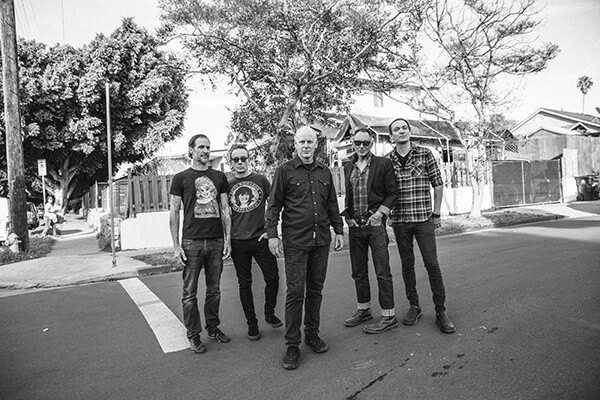ANALYSIS/OPINION:
<em>“But even in a pandemic, the Constitution cannot be put away and forgotten.”</em><br/>— <a href="/topics/supreme-court/">Supreme Court</a> of the United States, Nov. 25, 2020
When teaching law students about the Bill of Rights, professors often ask on the first day of class which is the first freedom protected by the First Amendment. The students invariably answer, “freedom of speech.” It is not. If the framers were trying to tell us which freedom is the first among equals, they did so by listing the religion clauses ahead of the freedom of speech.
The religion clauses prohibit the government from respecting the establishment of religion and from interfering with its free exercise.
This is not an academic issue. Recent events have demonstrated that the free exercise of religion is as threatened today as it was in 1791, when the First Amendment was ratified. Numerous state governors have targeted the free exercise of religion in their multifaceted assaults on personal liberty in the name of public safety. Last week, the U.S. Supreme Court put a stop to one of them.
Here is the backstory.
<a href="/topics/andrew-m-cuomo/">Andrew M. Cuomo</a> is the governor of New York. He has been foremost among his gubernatorial colleagues in his ubiquitous television explanations of his various executive orders restricting personal liberty during the COVID–19 pandemic. He even won an Emmy for his hundreds of television appearances during which he educated the viewing public on his understanding of the science behind the pandemic.
He attempted to educate the public, as well, on his understanding of the U.S. Constitution. That understanding is wanting.
Mr. <a href="/topics/andrew-m-cuomo/">Cuomo</a> established a color-coded system to indicate the severity of the COVID-19 infection rate by ZIP code. Red is the most severe and calls for limiting worship to 10 people per indoor venue. Orange is the next level, and it limits worshippers to 25.
Since the governor did not deem the right to worship as “essential,” even though he deemed campgrounds and bicycles, food and liquor shops to be essential, he imposed his 10- or 25-person limit on all houses of worship, irrespective of the size of the venue. He imposed no numerical limitations on essential venues.
<a name="pagebreak"/>
Thus, a small mom and pop liquor store could be packed to the gills with customers, but a 400-seat synagogue or a 1,200-seat cathedral would still be limited to 10 or 25 people. This was such an interference with the free exercise of religion that the Roman Catholic Diocese of Brooklyn, New York, and three Jewish congregations in New York City collectively sued the governor in federal court in Brooklyn. They lost. Last week, the <a href="/topics/supreme-court/">Supreme Court</a> interceded in a splendid 5-4 decision that defended religious liberty in the face of government efforts to sweep it aside.
The court recognized that the right to worship is fundamental — and has been the law of the land for many generations. Yet, its characterization as “fundamental” was a shot across the governor’s bow because, whatever he considers the freedom to worship to be, he ordered that it was not essential. The court held that by failing to characterize it as essential, while characterizing other choices as essential, Mr. <a href="/topics/andrew-m-cuomo/">Cuomo</a> demonstrated a hostility to religion.
Stated differently, if having more than 10 or 25 people in a large synagogue or church is likely to harm public health, then why is having 500 people in a Walmart or folks packed like sardines in a liquor store not likely to impair public health?
Because the religion clauses are articulated in the First Amendment — and because the freedom to worship is a natural right — the government can only interfere with them by meeting a demanding jurisprudential test called strict scrutiny. This mandates that the government must have a compelling state interest it is attempting to serve by the least-restrictive means.
It also means that a fundamental right cannot be targeted when other rights that may or may not be fundamental are left to individual choices.
The <a href="/topics/supreme-court/">Supreme Court</a>’s ruling, which was released at 2:12 a.m., was a response to an emergency application. After the plaintiffs lost at the trial court, they asked the trial judge to enjoin the governor during the pendency of their appeal so their congregants could worship during the coming holidays. The court declined. Then the plaintiffs asked the U.S. Court of Appeals for a temporary injunction until that court could hear their appeal. It declined.
Then the plaintiffs threw their Hail Mary pass and asked the <a href="/topics/supreme-court/">Supreme Court</a> to enjoin Mr. <a href="/topics/andrew-m-cuomo/">Cuomo</a> during the pendency of their appeal.
That pass ended up being a touchdown with no time left on the clock. The <a href="/topics/supreme-court/">Supreme Court</a> not only issued an injunction preventing the governor from limiting the number of worshippers at the religious venues that sued, but it did so in such sweeping, liberty-embracing language that will surely apply to all religious venues in the land.
Reading the court’s decision, and particularly the thoughtful and brilliant concurrence by Justice Neil Gorsuch — who wrote that “government is not free to disregard the First Amendment in times of crisis” — one can see that Mr. <a href="/topics/andrew-m-cuomo/">Cuomo</a> lost this case because while he may understand the science, he does not understand the jurisprudence.
Freedom of religion is not the first freedom by mistake. It was the judgment of the framers that this freedom is as essential to human fulfillment as are any other free choices that free people make.
By failing to recognize that natural, historic and jurisprudential truism, Mr. <a href="/topics/andrew-m-cuomo/">Cuomo</a> doomed his executive order to the ash bin of history.
<em>• Andrew P. Napolitano, a former judge of the Superior Court of New Jersey, is a regular contributor to The Washington Times. He is the author of nine books on the U.S. Constitution.</em>
<div id="newsletter-form-story">
<div class="block-content" id="opinion-signup-block">
<h3 class="block-title">Sign up for Daily Opinion Newsletter</h3>
</div>
</div>














